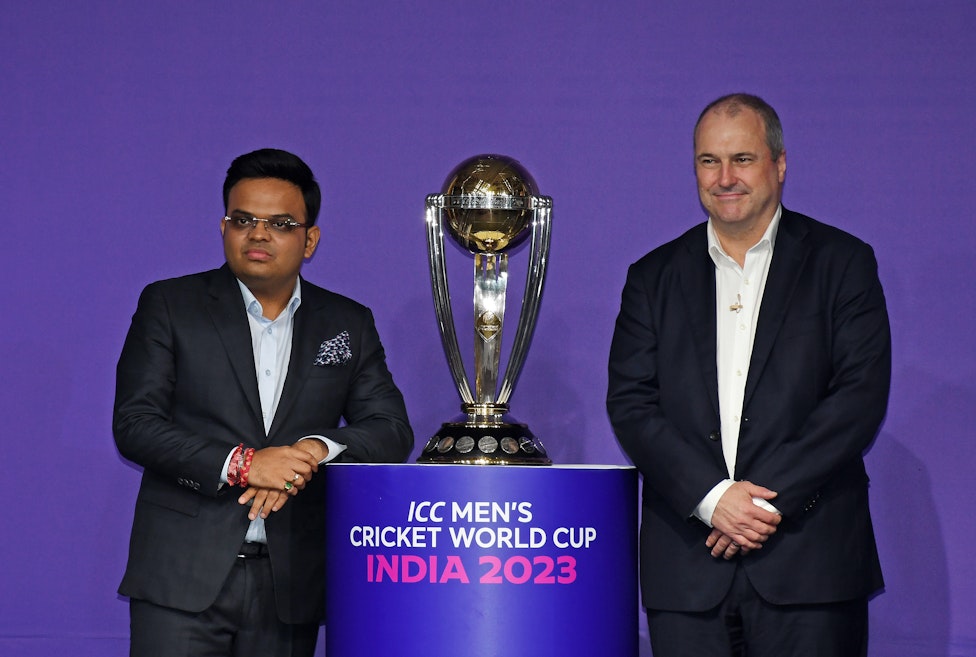 FEATURES
FEATURESThe International Cricket Council (ICC) have announced the new revenue-sharing model for the next four years, 2024-2027, which establishes the Board of Control for Cricket in India (BCCI) as the single-biggest player in the market, under their demand of being given the biggest slice of the cake to transpose the commercial value they bring to the table. Not that it has ever been in doubt, but by making their 38.5% share from ICC's approximate annual earnings of 600 million USD a reality - when no other board has a percentile share in double digits - they have surely rung a bell for cricket’s future.
The ICC's earnings offer a potential windfall of $41.33 million for ECB, accounting for a substantial 6.89% share. Following suit, Cricket Australia, another member of the infamous Big Three, stands to gain $37.53 million, equivalent to 6.25% of the overall earnings. Among the remaining nine full members, the PCB emerges as a formidable contender, poised to receive $34.51 million, a 5.75% share, surpassing the $30 million mark. The earnings of the remaining eight are less than 5%.
In light of the $600 million projected pool, a significant portion of $532.84 million (equivalent to 88.81%) will be allocated to these twelve Full Members. The remaining $67.16 million (or 11.19%) will be granted to the Associate Members. The huge gulf in the value tells you everything you need to hear.
There is no novelty to it. It has clear precedence, which smells something like 2014.
In 2017, under the leadership of Shashank Manohar, when the ICC went for a clean slate of the Big Three Model, conceptualized by N Srinivasan in 2014, it was a hope for world cricket to move beyond the coercion at the top. Surely, cricket has changed very much in the last six years, not least because of the disruption caused by the pandemic but by various other factors, including the foray of Indian business tycoons into the cricket league business outside the country.
By forcing their entry into markets like Emirates, South Africa, West Indies, and now the United States of America, Indian owners have created a shadow of IPL experience elsewhere that threatens to pull players out of their national ecosystem for a sustainable financial future on the T20 circuit. Hence, boards have become desperate and are now moving toward having their own T20 chambers established, and if that doesn’t cause a slow death to the cricket that we know to date, perhaps, a new amendment in the ICC model will.
The ICC’s logic behind the new decision stems from having an average weightage from the value ingrained in the cricketing ecosystem. Cricket history, performance in men's and women's ICC events over the last 16 years, contribution to the ICC's commercial revenue, and an equal weightage for the status of being a full member were the four parameters considered before arriving at the consensus. While every board was listed to receive an 8.3% share for being a full member, India's remarkable 85.3% contribution to the cricket economy resulted in the BCCI surpassing all other boards in terms of effective value and securing a larger portion of the earnings.
Some delusion works in multiple different ways. So unstable has been the foundation of the sport right now that even a single series cancellation from the jam-packed calendar can have a cascading effect. The length to which the cricket boards now run to ensure the broadcasting contracts are met is incredible, but that tells you how far the financial muscle of the boards have put the game in danger.
It is where the richer boards have a wider responsibility to the sport. Just by ensuring that everyone smoothly runs forward because that is how cricket can have a sustainable future elsewhere. Unless that is taken care of, cricket will continue to be a mammoth skyline without a real concrete foundation. In understanding the same lies the answer to the sport’s future, but if the new ICC amendment is anything to go by, it is the parent body that has failed the sport the most.